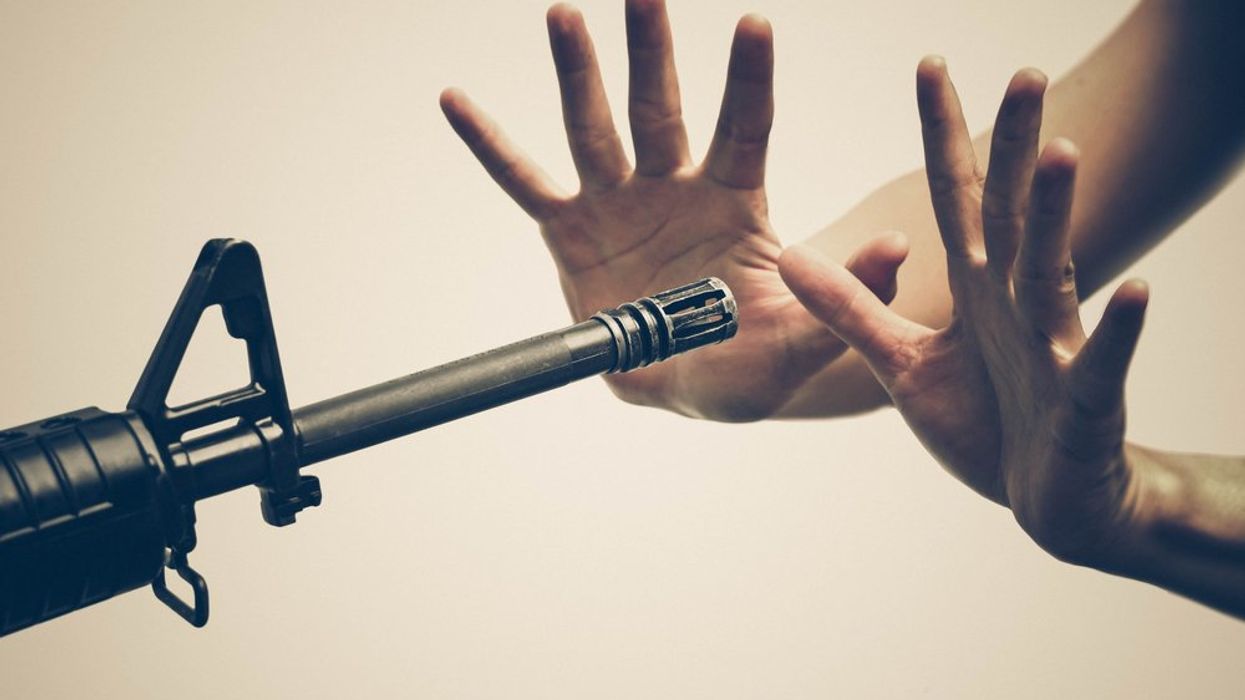
Video Source: Advocate Channel
(CNN) — If people want to reduce gun violence in the United States, experts say it’s important to start by understanding what we as a society are up against.
“First, it’s important to recognize that gun violence is a public health epidemic,” said Dr. Tochi Iroku-Malize, president of the American Academy of Family Physicians.
Gun violence surpassed car accidents in 2020 as the leading cause of death for kids and teens in the United States. And nearly 1 in 5 adults said a family member had been killed by a gun, according to an April Kaiser Family Foundation survey.
There are many influences on the rate of gun violence, including “the influence of the media, substance abuse, interpersonal violence, fragmentation of family life, and the increased availability of weapons and ease of accessing them,” Iroku-Malize said.
But while the problem may feel overwhelming, there are steps the country and its residents can take to address it, experts say.
Those actions include understanding the intersection of gun violence and mental health as well as knowing the signs someone could get violent with a firearm and how to store weapons safely. It’s also important to elect officials who support such policies as background checks for gun and ammunition purchases, red flag laws, and funding for violence intervention and research on firearms use.
Stop stigmatizing mental health
To prevent gun violence, we also have to stop blaming it all on mental illness, said Sarah Burd-Sharps, senior director of research for Everytown for Gun Safety.
The myth that the epidemic of violent gun deaths is all due to mental illness can be dangerous, Iroku-Malize said.
“Family physicians strongly caution against blaming mental illness for gun violence, which adds to the stigma and discrimination against people with mental health conditions,” she added.
In place of discrimination, we need to cultivate a culture that makes it less scary to get help for feelings of anger, isolation or depression — and safer for kids to report when they are concerned that their peers could turn to gun violence, Burd-Sharps said.
When the likely outcome might be punishment or social isolation, a child might hesitate to share a concerning behavior or scary social media post they see from their classmate, Burd-Sharps said.
Know the signs and raise the issue
There are signs that someone is more likely to commit violence and recognizing them can empower communities to raise concerns early in hopes of getting intervention or support, said Josh Horwitz, co-director of the Johns Hopkins Center for Gun Violence Solutions in Baltimore.
A history of violence, particularly domestic abuse, and sharing violent extremist content in social media posts are a big red flag of future violence, Horwitz said.
“We should be looking for the red flags and speaking up to get support for them,” he said. “If you are aware of a situation, raise it as high as you can right away,” whether that is to police, school administrators or employers.
Store guns safely
Safe gun storage is crucial to reduce shootings among children, Burd-Sharps said.
“Almost every day in this country, a kid under 18 — and often a 1-, 2-, 3-, 4- or 5-year-old — gets their hands on a loaded gun lying around the house not securely stored and either shoots themselves or someone else,” she said.
Gun owners should store their firearms unloaded and locked in a safe separate from the ammunition, Horwitz said.
And if your child is going over to another family’s house, make sure to ask whether that home has weapons and how they are stored, Burd-Sharps said.
“Just like we would ask if they have peanuts if our kid had a peanut allergy,” she added.
Get behind policies that work
Much of what researchers say can curb US gun violence needs to be enacted by the government and institutions, but that doesn’t mean individuals don’t have a say.
“One thing that we can do is vote for the candidates who are talking about this issue and who are committed to ending this epidemic in this country and who are committed to supporting the kind of programs and policies that matter,” Horwitz said.
More funding for gun violence research is crucial for better understanding the root causes and best interventions, Iroku-Malize said.
“I can’t emphasize enough the importance of funding for gun violence research,” she said. “At the end of the day, we need more research to examine the root causes of firearms violence — that’s why it’s critical that Congress fund appropriate gun violence research to prevent injuries and deaths.”
Other policies that matter include measures like background checks for gun and ammunition purchases, red flag laws, open carry regulations, and funding for resources such as threat assessment teams, violence interventions and prevention funds, Burd-Sharps said.
Policies like these differ from state to state, so the biggest way to make a difference is to contact your local representatives about the measures that you would like to see implemented, said Horwitz, who is also the Dana Feitler Professor of the Practice in Gun Violence Prevention and Advocacy at the Johns Hopkins Bloomberg School of Public Health.
“What most people don’t realize is that, especially at the state level, individualized contact with state legislators can pay huge dividends,” Horwitz said. “If you care about gun violence prevention, make a call, send a personalized email and look for opportunities to have face-to-face meetings with legislators.”
The-CNN-Wire
™ & © 2023 Cable News Network, Inc., a Warner Bros. Discovery Company. All rights reserved.
- Gun Suicides Are Higher in States Without Gun Control Laws ›
- Ghost Guns Are Banned in 11 States — What Are They? ›
- More Americans Want Gun Control Than Gun Protections ›
- Have We Finally Reached a Tipping Point on Gun Control? ›
- New Mexico Governor Declares Public Health Emergency Over Gun Violence ›
- Maine Mass Shooting: Suspect At-Large, Death Toll Rises ›
- Monday's Top Stories: Maine Shooting, Israel Bombards Gaza ›
- A Wellness Check Couldn't Stop 2023's Deadliest Shooting ›


















































